Our columnist digs into history to unearth the reasons major banks are filling the cultural void left by struggling institutions.
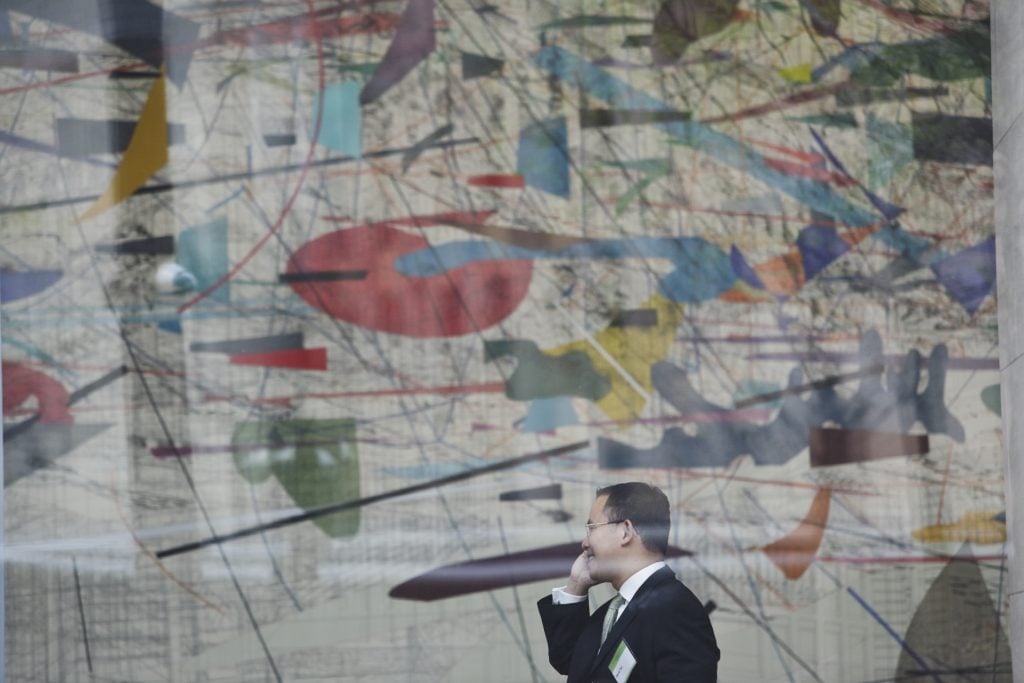
Every Monday morning, Artnet News brings you The Gray Market. The column decodes important stories from the previous week—and offers unparalleled insight into the inner workings of the art industry in the process.
This week, pulling the bigger picture back into focus…
WHAT LIES BENEATH
On Thursday, James Tarmy at Bloomberg provided an enlightening capsule history of major banks’ art collections dating back to the 18th century. Although the core message is that these corporate giants are continuing to acquire, exhibit, and lend artwork even as lockdown has forced many of the world’s most prestigious public arts institutions to retreat, the comparison also floats atop a double standard begging to be dredged out of the water—at least, if we want to have an honest discussion about the perceived value of art in 2020.
Central to the analysis are the 56 members of the International Association of Corporate Collections of Contemporary Art (IACCCA), an organization featuring the Collection Société Générale, the European Central Bank Art Collection, and the UBS Art Collection, among others. Tarmy relays that, of this group’s constituents, half have held their budgets steady, 78 percent have kept buying work, and all have “sustained their art programming” during the pandemic.
What does their art programming consist of? Apart from exhibiting some of their holdings in their corporate offices (which Tarmy tells us all banks do), the answer varies from collection to collection. Some operate their own “dedicated exhibition spaces,” and “almost every bank” loans works to nonprofit arts institutions, at times even covering the expenses of packing, shipping, and insurance.
Even banks’ collecting activity tends to wear a white hat. Tarmy writes that today, “most banks purchase art exclusively on the primary market” rather than resorting to auctions or private resellers. He quotes multiple corporate-collection leaders pledging allegiance to the importance of supporting living artists and/or the gallery system. Their acquisition prices often hover closer to earth than you might expect, too; Mary Rozell, who oversees the UBS collection, calls it “not very common” for the bank to spend more than $250,000 on a single work.
University of Amsterdam professor Arnold Witte argues these various forms of largesse propel banks’ art collections beyond their original intent as marketing tools and into the role of patrons on par with “the new Medici” (referring to the often-name-checked, incredibly powerful Italian merchant family that funded countless cultural endeavors starting in the 15th century). In the same vein, IACCCA chair Loa Haagen Pictet posits that corporate collections’ patronage is even more vital in the current era, when “public collections have very little means to collect and support artists.”
But Pictet’s statement demands that we ask why banks are now in such a vastly superior position to provide cultural sustenance than the museums that exist for that sole purpose. While one part of the answer is obvious and uncontroversial, another is subtler and far more uncomfortable.
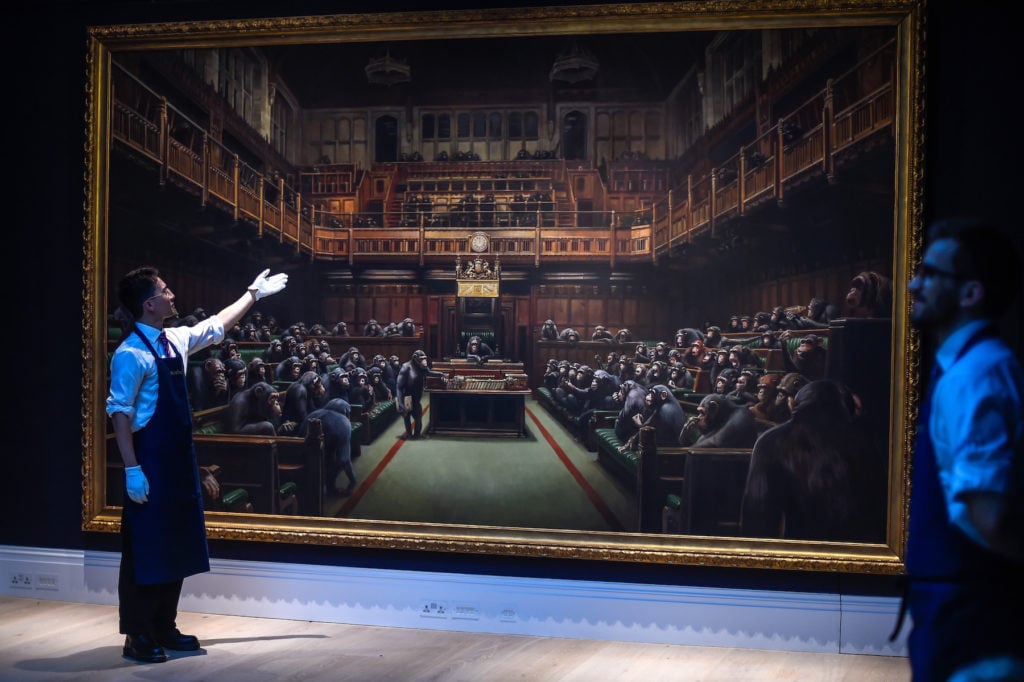
Gallery workers display Banksy’s ‘Devolved Parliament’ prior to a photo call at Sotheby’s on September 27, 2019 in London, England. Photo by Peter Summers/Getty Images.
DARWINIAN DEVELOPMENTS
On the surface level, major banks’ collections can acquire, exhibit, and lend artworks at game-changing scale because they are merely appendages of hulking multinational corporations rather than independent, self-sustaining cultural organizations. To state the obvious, you wouldn’t have the 30,000-piece UBS Art Collection without UBS, whose arsenal of lucrative financial services equipped it with $972 billion in total assets in 2019, per its latest annual report. It’s not a corporate collection’s responsibility to make money, just to spend it.
If only museums and other art nonprofits could say the same. Despite being conceived as a public good, these institutions have been forced to take more and more responsibility for their own survival in recent decades, particularly in the land of Uncle Sam. A 2012 overview by the US Embassy found that, since 1989, government support went from covering 38 percent of annual revenue at the nation’s museums to barely above 24 percent. The succeeding eight years have ushered in a steady onslaught of tax cuts and demonization of government intervention, making public coffers that much smaller and harder to unlock.
The worsening drought of public funding has forced institutions to lean harder on their three other revenue streams: endowment, fundraising, and earned revenue.
The first of these—interest on the endowment—is basically powerless to plug the yawning gap; the financial markets do what the financial markets do regardless of investors’ needs. And dipping into the principal amount of an endowment remains verboten, even after the Association of Art Museum Directors chilled on some of its usual restrictions to help members soldier through the lockdown this spring.
Increased fundraising from private and corporate patrons holds more promise, but it’s difficult work fraught with caveats. As we’ve seen again and again, donors are far hornier to cut checks for bodacious architectural expansions or starry artwork acquisitions than they are to cover everyday necessities like staff salaries or HVAC bills. Few are eager to ramp up their giving in a rocky economy, either.
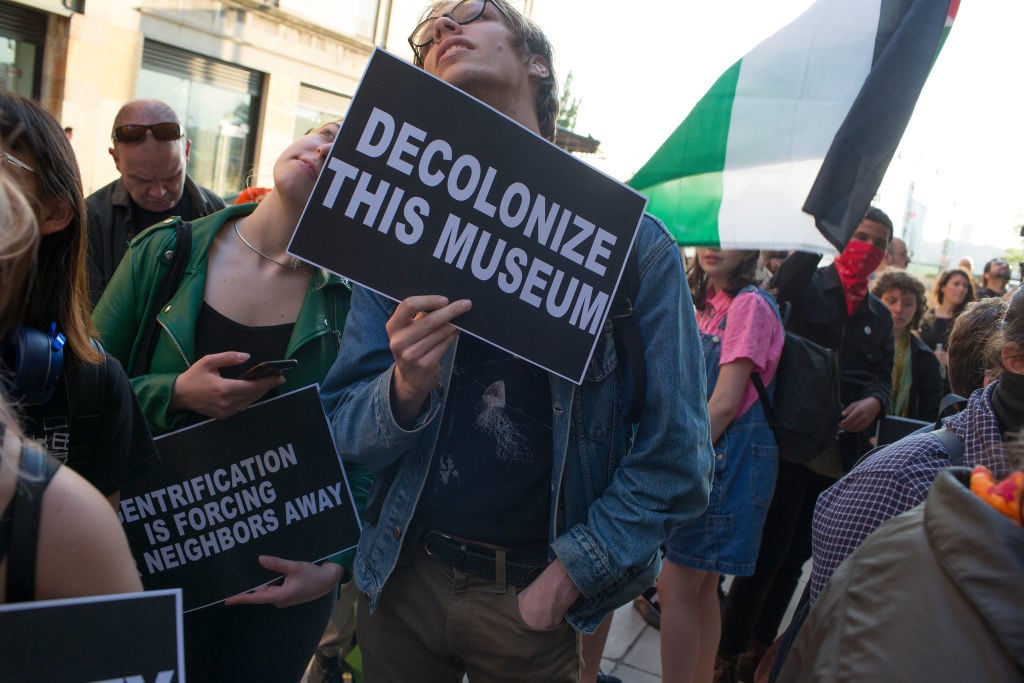
Political activists gather outside of the Whitney Museum in May to demand that the museum’s board dismiss Warren Kanders. Photo: Andrew Lichtenstein/Corbis via Getty Images.
The pool of acceptable patrons is also shrinking thanks to increasingly razor-taloned scrutiny of the sources of donors’ wealth. Over the past 16 months, we’ve seen this ethical Darwinism at work in the pressure-induced resignations of Whitney Museum trustee Warren Kanders and Los Angeles County Museum of Art trustee Tom Gores. Unlike the Association of Art Museum Directors’ guidelines, these standards show no signs of relaxing due to the pandemic.
This leaves earned income—line items like ticket sales, merch, licensing, and venue rentals—as art institutions’ last hope. The category now “typically” accounts for around 40 percent of a museum’s annual revenue, according to the Sotheby’s Institute of Art. But leaning harder on these options exposed museums to a barrage of criticism for alleged commercialization before the virus hit, and their ability to leverage them afterward has been gutted by subsistence-level capacity limits, outright bans on social gatherings, and reduced consumer spending tied to the recession.
So why are corporate collections advancing while public collections recede? The simple answer is that banks—which were originally designed to make money and have only invented more (and more profitable) ways to do so over the past century—can easily afford to evolve and sustain cultural side projects as a promotional tool and public benefit even during crises. Art institutions—which were originally designed to consume a steady diet of government funding and private philanthropy—have increasingly had to reverse-engineer themselves into profit-generators in a money-losing business that becomes impossible in the COVID era.
Except, that’s not the whole story.
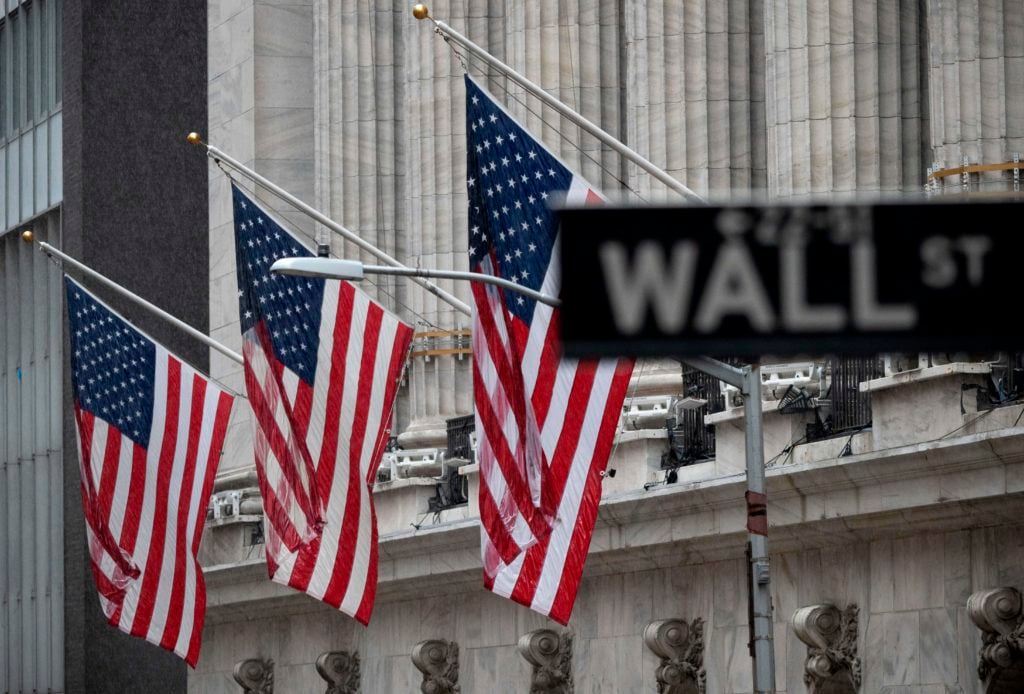
US flags in front of the New York Stock Exchange (NYSE) on Wall Street in New York City. Photo: JOHANNES EISELE/AFP/Getty Images.
THE CHOSEN ONES
There’s one problem with the “simple answer” I just unfurled above: banks don’t always make money. In fact, they sometimes lose so much cash so quickly via their own bad decisions that they threaten the entire world economy. But in these moments of existential duress, they tend to be treated entirely differently than museums.
There is no better example than the US’s role in the Great Recession of 2008. After the largest banks spent decades lobbying to dismantle the financial regulatory system, and then years loading up their balance sheets with increasingly high-risk, high-yield financial instruments (largely derivatives of volatile subprime home mortgages), those radioactive assets finally went Chernobyl. The meltdown radiated far beyond Wall Street, resulting in 8.7 million people losing their jobs and 10 million people losing their homes in the US alone.
Yet Washington swiftly voted to bail out a consortium of major banks, insurers, and corporations to the tune of $700 billion in taxpayer money via the Troubled Asset Relief Program in October 2008. Later repackaged as the Dodd-Frank Act, the final bill actually only (“only”) paid out $475 billion, with $250 billion of the total amount going to “stabilize banking institutions,” according to the US Treasury. (Ironically, it didn’t arrive quickly enough to save Lehman Brothers, whose collapse kick-started the recession, and whose corporate collection was later auctioned off to help pay back creditors.)
Despite paying billions in fines—infamously, no notable executives were prosecuted for their roles in the crash—Wall Street’s titans have had it very good ever since. Quartz reported that Goldman Sachs, Wells Fargo, and JPMorgan each netted between $20 billion and $110 billion more in the decade after Dodd-Frank than the decade preceding the crash. That kind of windfall can sustain a pretty durable art program, especially when you didn’t have to pay the true clean-up costs of the mess you made beforehand.
Now let’s compare this to the present cataclysm for public art collections. A new report from the American Alliance of Museums last week found that nearly one-third of 850 surveyed institutions had not reopened after shutting down this spring—and roughly 30 percent were either at risk of dissolving within the next year or unsure of their financial position relative to that question.
When Congress was haggling over the coronavirus rescue package this spring, US cultural organizations lobbied Washington to include $4 billion to help them weather pandemic-induced closures and cutbacks. Lawmakers hacksawed that amount down to a not-so-grand total of $157.5 million: $75 million each for the National Endowment for the Arts and the National Endowment for the Humanities; $50 million for the Institute of Museum and Library Services; $25 million for the Kennedy Center; and $7.5 million for the Smithsonian Institution.
Now, it’s easy for a cold-blooded economist to justify approving the 2008 bank bailouts and denying the 2020 entreaty for cultural aid. US taxpayers ultimately made a profit of about $8 billion from Dodd-Frank after nearly all recipients of the bailout money paid back the loans with interest, according to the US Treasury. Hard to imagine a return on investment coming from the $4 billion requested by arts organizations earlier this year.
Yet this is exactly the point. In the US, most contemporary policymakers view major banks as essential to American life—vital organs worth saving at any cost. Art institutions, on the other hand, are seen as an elitist accessory with no demonstrable benefits to anyone else, as diplomat Nikki Haley communicated loud and clear in her lambasting of the trickle of cultural aid that did make it into the final CARES Act.
Both of these conclusions flow from the mentality of ruthless pragmatism woven into the nation’s DNA since at least the original Gilded Age, then cultivated to a lethal new extreme since the Reagan-era emergence of the prosperity gospel: that an enterprise is not only worthwhile but virtuous in direct proportion to its measurable value, whether that value manifests in the form of personal wealth, job creation, or a meaningful percentage of GDP. The ongoing financialization of the global economy also means this philosophy has been exported far and wide.
So it’s no surprise that we find ourselves in an era when corporate collections from “too big to fail” banks are equipped to step into the cultural vacuum opened by the epochal struggles of nonprofit art institutions. But you’ll have to forgive me if my enthusiasm for their generosity is limited by my knowledge of what’s on the other side of this coin.
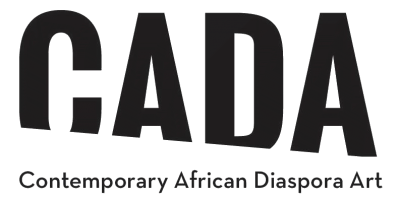
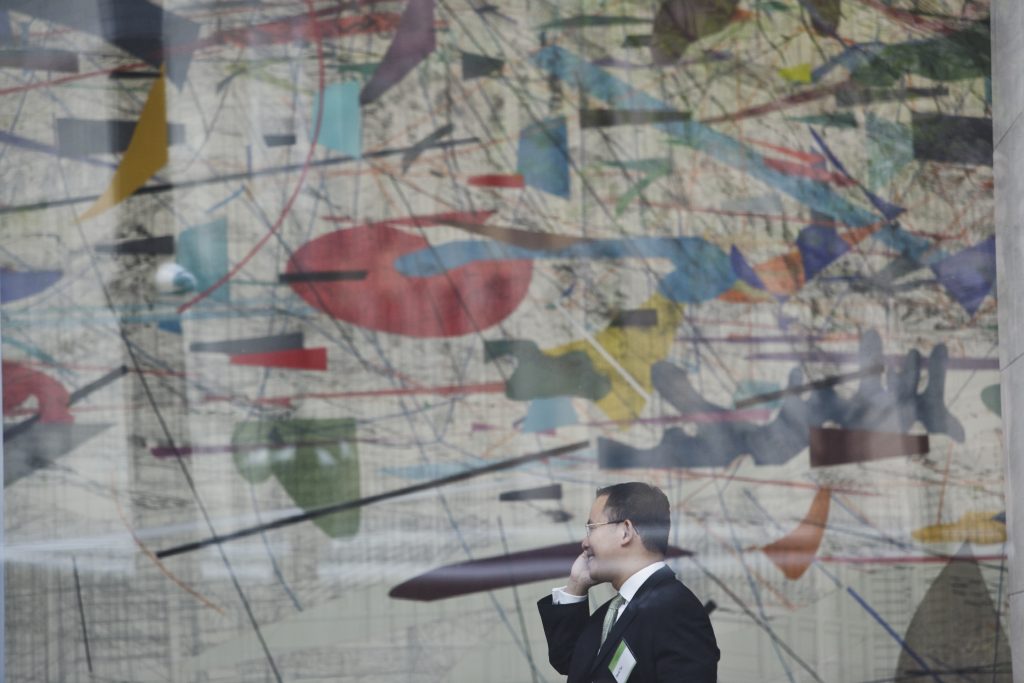
Leave A Comment